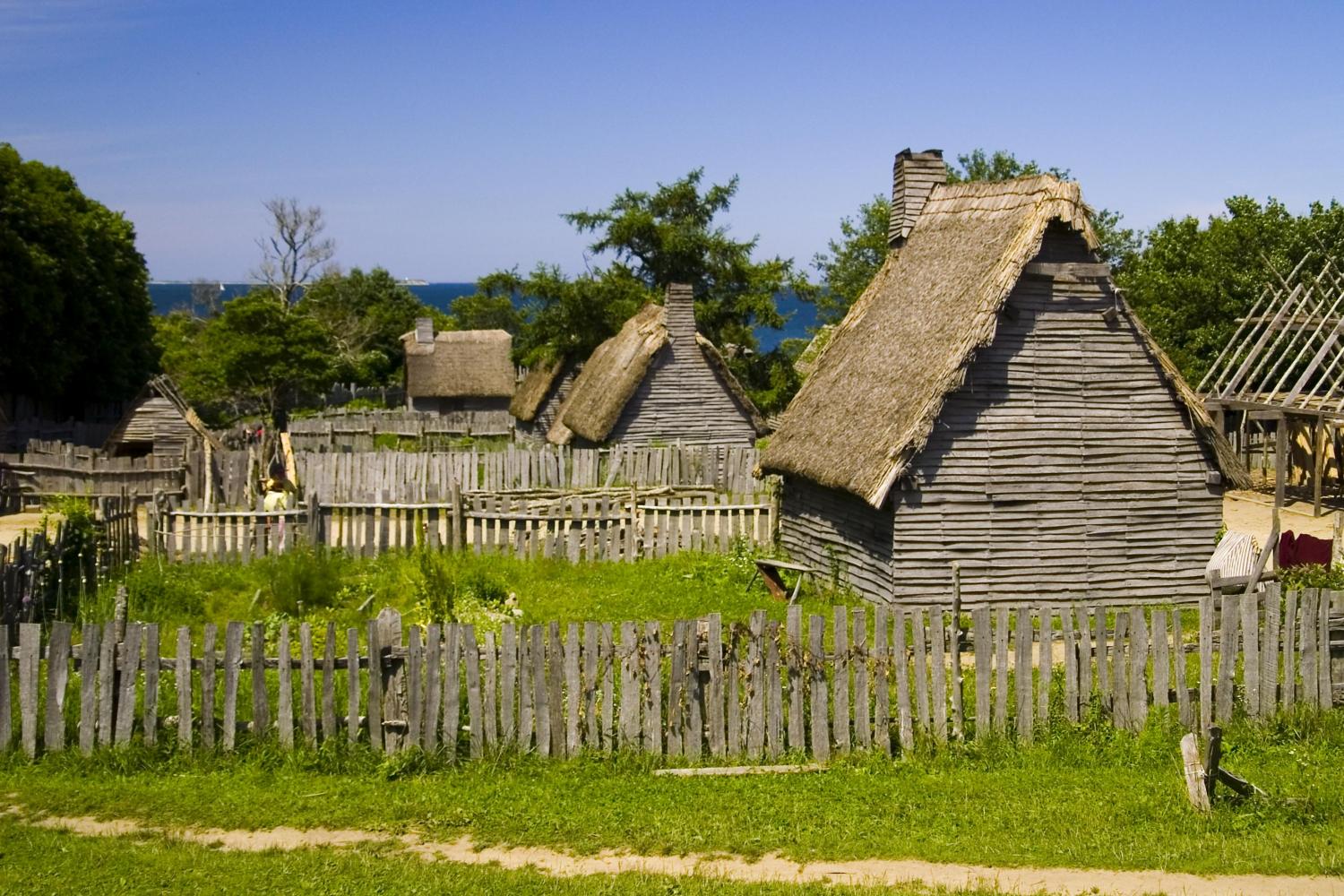
Yesterday Tommy Kidd provided a helpful overview of the original context for the first Thanksgiving, along with its development through time.
In a review of Robert Tracy McKenzie’s The First Thanksgiving: What the Real Story Tells Us About Loving God and Learning from History (IVP, 2013), John Turner summarized what we know about that original feast in 1621:
In late September or early October, the Pilgrims celebrated their recently gathered harvest.
They did so without pumpkin pie (no ovens), cranberry sauce (no sugar), and sweet potatoes (not native to North America).
One of the settlers, Edward Winslow, recorded that they ate some kind of “fowl”—more likely to be goose or duck than turkey. Geese were much easier to shoot.
The meal may also have included fish, shellfish, and perhaps eel, and the settlers would also have used vegetables such as turnips and carrots.
Nor did they sit across from their native counterparts at a long table. Instead, McKenzie writes, “We should picture an outdoor feast in which almost everyone was sitting on the ground and eating with their hands.”
About 90 Wampanoag men and their chief Massasoit were present, but we don’t know whether they came with an invitation.
A few years later, a delegation politely informed Massasoit that the Pilgrims “could no longer give them such entertainment as [they] had done.”
It was, in any event, a fragile peace. In 1623, the Pilgrims placed the severed head of a Massachusetts Indian on their fort as a warning to native enemies and friends alike.
For the Pilgrims, this was not a holy day of thanksgiving, a long and solemn day of prayer, preaching, and worship. Instead, the “first” thanksgiving was a harvest celebration, including military drills and “recreations” (probably races, shooting contests, and so forth).
Later generations of Americans temporarily managed to turn Thanksgiving into a church-centered day of worship and thanks, which eventually faded into an increased focus both on large family meals and football games.
Narrative historian Nathaniel Philbrick—the author of Mayflower: A Story of Courage, Community, and War—offers his own summary of what we learn from a letter written a couple of months later (December 13, 1621) by Edward Winslow, the 26-year-old governor of Plymouth Colony:
He describes a harvest festival that occurred not at the end of November but in late September or early October. Interestingly, Winslow does not call it a thanksgiving. . . .
What the pilgrims did have were ducks and geese. Winslow tells us that once they had harvested their crops, Governor William Bradford ordered four men to go fowling so that we might rejoice together after a more special manner.
In just a few days, the hunters secured enough ducks and geese to last the entire settlement a week. But what began as an English affair soon became an overwhelmingly native celebration.
Earlier that spring, the Wampanoag leader Massasoit had offered to form an alliance with the pilgrims. That fall, Massasoit arrived in Plymouth with 90 of his people and five freshly killed deer. Instead of the prim and proper sit-down affair of legend, the first Thanksgiving was an outdoor festival. Even if all the pilgrims’ furniture was brought out into the sunshine, most of the celebrants stood, squatted or sat as they clustered around fires where the deer and birds turned on wooden spits. Also simmering were pottages, stews into which meat and vegetables were thrown.
Winslow makes no mention of it, but the first Thanksgiving coincided with what was, for the pilgrims, a new and startling phenomena, the turning of the green leaves of summer to the incandescent yellows, reds, and purples of a New England autumn.
In Britain, the cloudy fall days and warm nights cause the autumn colors to be muted and lackluster. In New England, on the other hand, the profusion of sunny, fall days and cool, but not freezing, nights unleashes the colors latent within the trees’ leaves. It was a display that must have contributed to the enthusiasm with which Winslow wrote of the festivities that fall.
For me, this is an instance when the historical reality is much more interesting than the myth. Instead of a pious warm-up for a glum Thanksgiving dinner with the in-laws, the Plymouth Harvest Festival of 1621 was more like Woodstock, an outdoor celebration that just sort of happened.
Here is the relevant text from Winslow’s letter:
Our corn [i.e. wheat] did prove well, and God be praised, we had a good increase of Indian corn, and our barley indifferent good, but our peas not worth the gathering, for we feared they were too late sown. They came up very well, and blossomed, but the sun parched them in the blossom. Our harvest being gotten in, our governor sent four men on fowling, that so we might after a special manner rejoice together after we had gathered the fruit of our labors. They four in one day killed as much fowl as, with a little help beside, served the company almost a week. At which time, amongst other recreations, we exercised our arms, many of the Indians coming amongst us, and among the rest their greatest king Massasoit, with some ninety men, whom for three days we entertained and feasted, and they went out and killed five deer, which they brought to the plantation and bestowed on our governor, and upon the captain and others. And although it be not always so plentiful as it was at this time with us, yet by the goodness of God, we are so far from want that we often wish you partakers of our plenty.


















